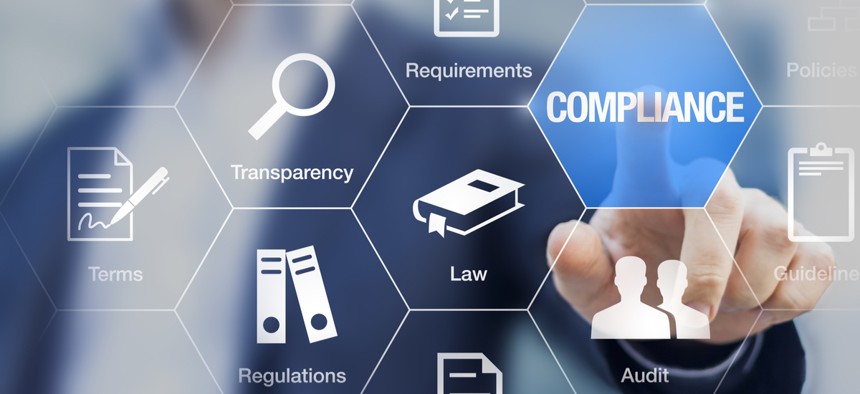The Coming Digitization of the Regulatory Environment

NicoElNin/Shutterstock
Here's what the U.S. can learn about digitizing regulations from two of the largest economies.
There is no question that digitization is impacting both the global economy and government. On Oct. 31, the World Bank released the "Doing Business 2019" report, noting that the time required to start a new business had decreased by more than half, from 47 to 20 days. The report documented a record number of 314 regulatory reforms over the past year and highlighted that economic growth requires initiatives for both better efficiency and safeguards.
Two of the largest economies, China and India, are among the top 10 reformers. Both use digital techniques to streamline and enhance regulatory processes, especially for customs and trade.
Government CIOs around the world should take note. If the World Bank and key reformers have it right, digital government strategies need to include digitization of regulatory approaches, removing barriers to economic growth and focusing efforts on violators rather placing equal burdens on all companies in an industry.
The issue at hand is how to balance the compliance burden with effective protection of public interests. Historically, regulations were created in response to a horror story, such as cancer caused by companies improperly disposing of toxic waste. Over time, many governments have amassed a Rubik’s cube of overlapping and often confusing regulations. Reporting was based on voluminous paperwork submissions, each regulation with its own form that companies fill out by hand usually using data printed out from multiple systems.
Regulatory reform has often been part of governments’ approach to job growth. Much of the recent focus has been on replacing paper forms with websites and e-forms, overlaid with tools such as rules engines. But governments rarely have the resources to timely address complaints, often taking months or years to investigate long after the damage was done.
The Doing Business report highlights how governments are starting to take advantage of digitization to better regulate companies and enable economic growth. Many of the reforms highlighted in the report use digital approaches to more effectively target risks, while reducing the compliance burden. This is a disruptive approach to regulatory reform, using data analytics tools coupled with streamlined reporting and third-party data to focus regulatory enforcement on risks.
With major economies like India and China applying such a digital approach to customs and trade regulations, we can expect many companies to drive their governments to follow suit.
So what actions should government executives take? First, a strategic plan for digitization is required. This is not a technology user design exercise. It requires understanding how licensing and enforcement interactions occur today. Then, assess how analytics and multi-source data (e.g. social media, machine-to-machine filings, dark web) can be used to speed identification and response to risky companies, replacing paperwork forms.
A second key to success is teamwork and leadership across all regulation owners dealing with specific industries. Senior leadership has to drive focus on at least one specific sector whereby business growth will substantially help the quality of life in the state or country including: an interagency team for each industry segment; a clear team charter approved by leadership; and a governance model for decision-making. Each team should identify a critical path roadmap of changes, using a business case with required regulatory changes, to develop political sponsorship. In turn, the leadership must provide funding and bureaucratic cover for implementation.
The third key is using technology to simplify and reduce filing burdens while fostering regulatory compliance. Teams should not look at digitization as merely creating better online forms; that approach increases a company’s costs by requiring new administrative reports from multiple corporate systems, obtaining online credentials from the government, and then hiring administrative staff to fill in e-forms. Instead, teams should look first at data reuse and collaborative workflows where overlapping regulatory requirements exist. Teams also need to leverage industry-specific electronic data standards, consolidating registries around a single electronic identity of a business, developing risk targeting tools, leveraging trusted IoT sensors and third-party data sources, and using machine learning to continually improve analytics algorithms and remove bias in decision-making.
At the end of the day, digitization will help government operate more efficiently, transparently and effectively manage the regulatory environment. Governments that take advantage of digitization will foster a healthier and economically successful environment than those that remain in the silos of the paperwork era.
Mark Forman, former U.S. Administrator for E-Government and Information Technology at the Office of Management and Budget (2001-2003), is global head of Public Sector at Unisys.





